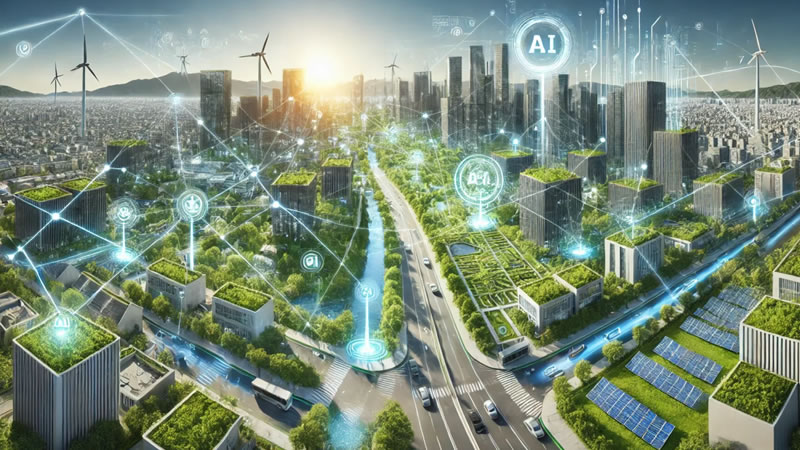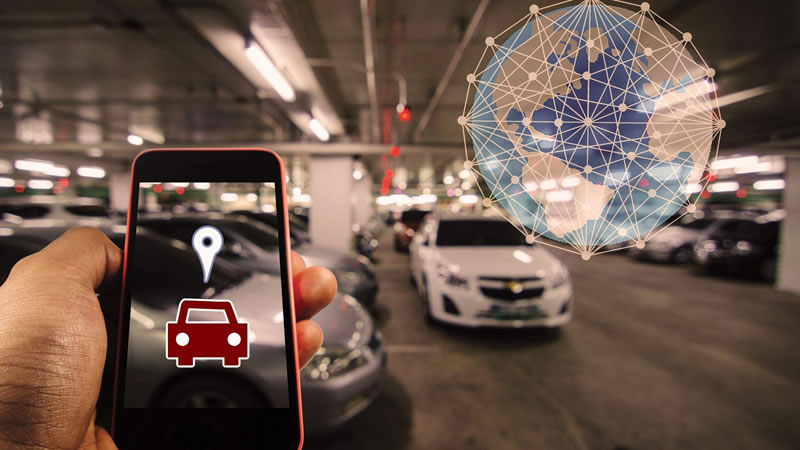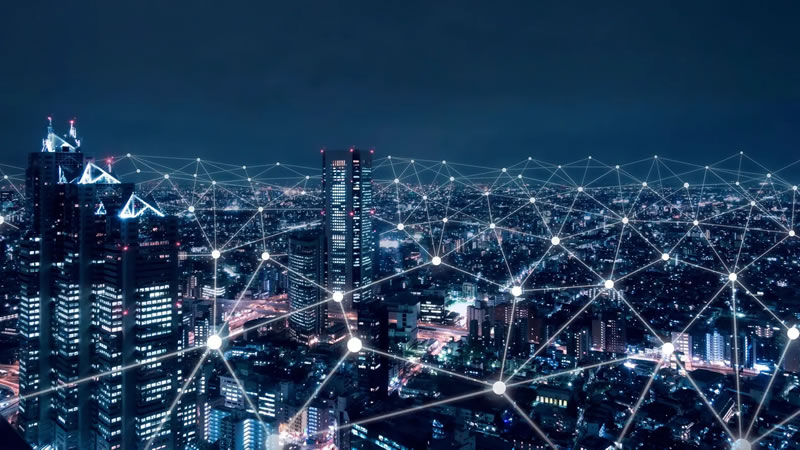The world’s cities are shifting earlier than ever. Urban seats are no longer just about structures, roads, and people; they are flourishing living, connected bionetworks. At the heart of this alteration is artificial intelligence in smart cities and urban mobility, a powerful mixture that is determining the way we live, work, and change.
From plummeting traffic congestion to making transport more maintainable, AI is giving cities the tools to develop smarter, greener, and more well-organized. Let’s delve into how artificial intelligence is changing the future of mobility in smart cities, and why this change matters for everyone.

The Rise of Artificial Intelligence in Cities
Artificial intelligence cities are not discipline fiction any longer. Across the sphere, local administrations and private businesses are using AI to solve everyday tasks. Whether it’s analyzing traffic designs, forecasting pollution levels, or guiding independent cars, AI works behind the scenes to make urban life flatter.
A key benefit of AI is its ability to process huge amounts of big data. Cities make endless streams of material from sensors, GPS, automobiles, and mobile phones. On its own, this data is useless. But with AI, it develops a powerful reserve that can guide choices on public transport, smart parking management, smooth noise pollution control, and 5G Networks.
Urban Mobility: The Backbone of Smart Cities
Mobility is at the essence of city life. Every day, millions of people need to get from one home to another, and goods need to move professionally through crowded roads. Urban mobility is about more than impartial cars; it includes buses, Pullmans, bicycles, scooters, and even walkers.
When cities fail at flexibility, the results are clear: traffic jams, lost time, unfulfilled travelers, and rising air pollution. This is where smart mobility solutions motorized by AI come into play.
For example, AI can help:
Predict traffic congestion before it occurs, allowing establishments to adjust signs or reroute cars.
- Recover public transport by analyzing nearside demand and preparing buses or Pullmans more efficiently.
- Create sustainable mobility choices like electric car-sharing, bike fees, and on-demand vehicles.
- With AI in the driver’s seat, cities can shift from being reactive to proactive when it comes to transportation planning.
Smart Parking and Traffic Management
One of the most trying parts of city life is finding space. Studies show that a huge hunk of urban circulation comes from motorists circling the roads, looking for a spot.
AI assists in solving this problem through smart parking management. Instruments installed in space lots or lengthwise roads send real-time data about availability. AI then processes this data and leads drivers straight to an open interplanetary. Not only does this save time, but it also reduces needless traffic and lowers releases.

Traffic organization is an additional area where artificial intelligence in smart cities and urban mobility glosses. AI-powered systems can screen connections, adjust traffic lights automatically, and even prioritize ambulances or fire cars when needed. This makes the complete city safer and more well-organized.
Autonomous Cars and Future Mobility
No conversation about AI in Research and cities is complete without mentioning autonomous cars. These self-driving buses rely heavily on AI to circumnavigate, detect problems, and make split-second choices.
In the background of mobility in smart cities, autonomous cars could reduce the chances, cut down on parking needs, and restore traffic flow. Combined with Mobility as a Service (MaaS), where people use an app to plan and pay for all forms of transport, self-driving cars may one day develop just another piece of a unified urban flexibility puzzle.
Tackling Pollution with AI
Traffic jams don’t just waste time; they create thoughtful environmental glitches. High levels of air pollution and noise pollution are related to poor fitness, climate change, and lower quality of life.
- By applying AI to transport, cities can directly address these issues. For example, AI can:
- Indorse cleaner routes for distribution fleets.
- Optimize community buses to replace needless car trips.
- Monitor air excellence in real time and regulate traffic or industry action accordingly.
These keen solutions make cities not only more well-organized but also better and more sustainable.
Collaboration Between Public and Private Sectors
Structuring truly artificial intelligence cities requires cooperation. Governments can’t do it unaccompanied. Partnerships with private businesses, from tech goliaths to startups, are essential.
For example, fleet workers can share fleet data with city organizers to help improve the substructure. Mobility companies can donate insights on travel conduct. And telecom providers can ensure fast, secure connections for sensors and AI schemes.
At the same time, data privacy remains a top concern. While AI Marketing Strategies, cities must be sure that this information is safeguarded and used sensibly. Trust is key if people are to embrace AI-powered answers in their daily lives.
The Benefits of AI in Urban Mobility
When done right, mixing AI into cities creates clear welfare:
- Efficiency: Less mobbing, smoother circulation flow, and smarter infrastructure.
- Safety: Reduced chances thanks to prognostic systems and independent vehicles.
- Sustainability: Lower releases, better air quality, and greener mobility selections.
- Convenience: Faster travel, easier parking, and more dependable public conveyance.
All of this contributes to a better quality of life for city inhabitants. Instead of wasting hours in traffic or commerce with outdated systems, people can enjoy a flatter, safer urban environment.
Looking Ahead: The Future of Smart Cities
The trip toward fully artificial intelligence in smart cities and urban mobility is continuing. Some cities are more advanced than others, but the course is clear. Over the next period, we will likely see:
- Wider implementation of AI-powered traffic systems.
- Growth of sustainable mobility options like electronic fleets.
- Growth of autonomous cars as the skill matures.
- Stronger stress on data privacy and ethical AI use.
Cities that hold these trends will not only attract trades and talent but also deliver a higher standard of living for their countries.

AI is not just a slogan anymore; it’s the engine behind the future of cities. By joining artificial intelligence in smart cities and urban mobility, we can make places that are more efficient, maintainable, and livable.
From smart mobility solutions like independent cars and MaaS, to reducing traffic congestion, managing smart parking, and aggressive air pollution, the potential is endless. The challenge now is to bring administrations, businesses, and citizens together to build artificial intelligence cities that truly work for everybody.
1. How does artificial intelligence improve smart city mobility?
AI analyzes traffic data, forecasts mobbing, and helps manage public transportation. This makes mobility in smart metropolises earlier, safer, and more maintainable.
2. What role do autonomous cars play in urban mobility?
Independent cars reduce accidents, cut circulation, and lower space needs. They can also attach to Mobility as a Service stages for seamless portability.
3. Can AI help reduce air pollution in smart cities?
Yes, AI proposes cleaner routes, recovers public transport, and screens releases. This reduces traffic-related air contamination and recovers urban health.
4. Why is data privacy important in artificial intelligence cities?
Smart cities are contingent on big data from devices and fleets. Defensively, this data builds public trust and safeguards that AI systems are safe and moral.
5. How does smart parking management benefit urban mobility?
AI-based parking systems lead drivers to obtainable spots quickly. This decreases congestion, saves time, and lowers needless releases in busy cities.

